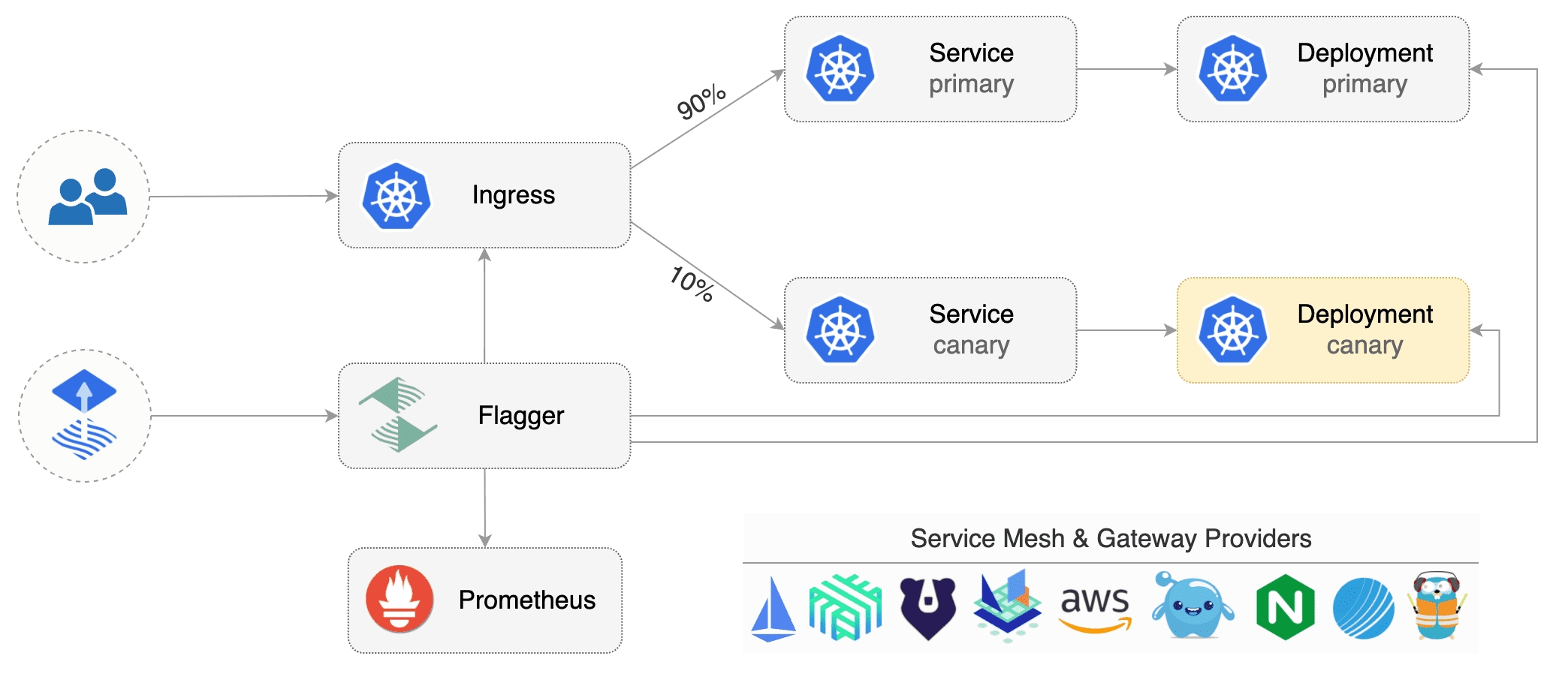Flagger
Flagger is a cloud-native progressive delivery tool that automates the release process for applications running on Kubernetes. It significantly reduces the risk of introducing new software versions in production by implementing sophisticated traffic management, automated rollback mechanisms, and comprehensive observability.
Key Features (2025)
Advanced Deployment Strategies: Canary releases, A/B testing, Blue/Green deployments, and traffic mirroring
Multi-Provider Support: Works with service meshes (Istio, Linkerd, Consul Connect, Open Service Mesh) and ingress controllers (NGINX, Traefik, Gateway API, Contour, Ambassador, Gloo)
Comprehensive Observability: Integration with Prometheus, Grafana, Datadog, New Relic, CloudWatch, and custom metrics
Enhanced Security: Built-in security scanning, policy enforcement, and compliance validation
GitOps Ready: Native integration with Flux v2, ArgoCD, and other GitOps tools
Multi-Cloud: Support for AWS EKS, Azure AKS, Google GKE, and on-premises clusters

Modern Architecture Benefits
2025 Enhancements
Gateway API Support: Native support for Kubernetes Gateway API standard
Enhanced Security: Integration with OPA Gatekeeper, Falco, and policy engines
Cost Optimization: Traffic-based cost analysis and optimization recommendations
ML-Powered Analysis: Machine learning-based anomaly detection for canary analysis
Multi-Cluster Deployments: Support for progressive delivery across multiple clusters
Integration Ecosystem
Flagger seamlessly integrates with modern cloud-native tools:
CI/CD Platforms: Tekton, GitHub Actions, Azure Pipelines, GitLab CI/CD
GitOps Tools: Flux v2, ArgoCD, Rancher Fleet
Service Meshes: Istio 1.20+, Linkerd 2.14+, Consul Connect 1.17+
Monitoring: Prometheus, Grafana, Jaeger, OpenTelemetry
Security: OPA Gatekeeper, Falco, Twistlock, Aqua Security
Gateway API Integration (2025)
Flagger v1.37+ provides native support for Kubernetes Gateway API, offering a more standardized approach to traffic management.
Gateway API Setup
Install Gateway API CRDs and configure Istio for Gateway API:
Gateway API Canary Configuration
Istio Service Mesh Integration (2025)
Enhanced Istio Setup
Install Istio with modern security and observability features:
Advanced Istio Canary with Security
Security and Compliance (2025)
OPA Gatekeeper Integration
Configure policy enforcement for canary deployments:
Falco Integration for Runtime Security
Create a Falco rule for monitoring canary deployments:
Multi-Cluster Progressive Delivery
Cross-Cluster Canary Configuration
Observability and Monitoring (2025)
Enhanced Grafana Dashboards
Import Flagger dashboards with modern visualizations:
OpenTelemetry Integration
Configure distributed tracing for canary deployments:
Production Best Practices (2025)
Resource Management
Configure appropriate resource limits and requests:
High Availability Configuration
Backup and Disaster Recovery
Implement backup strategies for Flagger configurations:
For an in-depth look at the analysis process read the usage docs.
Last updated